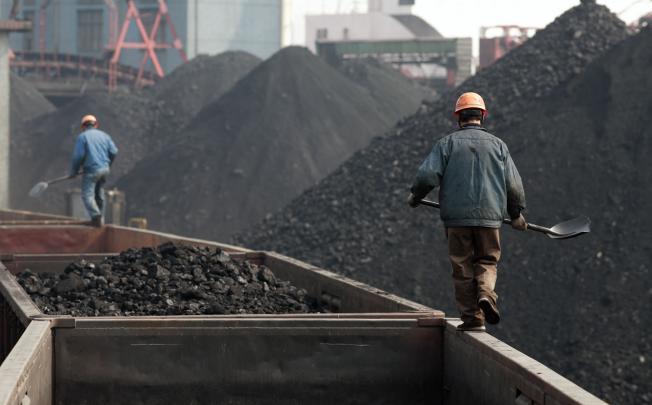Coal prices’ march to eight-month highs, driven by China’s huge appetite for power consumption, looks like an interlude in a longer-term decline and is seen losing traction later this year.
Investors widely anticipate a slow demise for coal use due to policies encouraging cleaner natural gas and renewable energy generation, but the shorter-term outlook for the industry has seen a sharp reversal of fortunes.
Asia’s benchmark physical coal prices have gained more than a third from lows seen in May to nearly $98 per tonne, while European benchmark coal futures are at eight-month highs of around $74 a tonne.
Recent gains are largely due to high demand in China, where power consumption has jumped more than 6 percent since the beginning of the year.
This month, torrential rains forced China to cut capacity by as much as two thirds at its Three Gorges and Gezhouba hydro power plants in an effort to ease pressure on the Yangtze river, forcing utilities to switch to coal.
Three Gorges is by far the world’s biggest power station, with an installed generation capacity of 22.5 gigawatts – equivalent to around 20 coal-fired power plants.
Heatwaves in the north also boosted air-conditioning demand, while coal mining and shipping were hampered due to adverse weather in Indonesia and South Africa. Production in Australia was disrupted by a strike.
Many of these conditions should ease next month, however.
“Downside (to prices) is likely from the end of August but a lot depends on China,” said Wayne Bryan, an analyst at Alfa Energy.
China’s decision last year to cap domestic mining output resulted in a sudden surge in overseas orders by its utilities and triggered a price spike.
However, there have been several Chinese policy changes since, surprising traders and contributing to a price slump in late 2016 and earlier this year.
Singapore-listed commodity merchant Noble Group, a major global coal trader, reported a $129.3 million loss in May for the first quarter this year to which coal prices heavily contributed.
China had cut coal capacity by 111 million tonnes by the end of June, representing 74 percent of its target for this year.
“China is likely to continue the consolidation of its coal mining industry, yet will probably try to avoid production being slashed in the way that happened in the past,” analysts at Commerzbank wrote.
“We regard the latest price rise as merely an intermezzo and expect coal prices to fall again in the second half of the year.”
Analysts expect average futures prices to fall to $60-$70/ton in the third and fourth quarters of this year and $50-$65/ton in the first quarter of next year.
China plans to add 200 million tonnes of new coal mining capacity this year, in addition to the 90 million tonnes already added in the first half of this year.
In January, the National Development and Reforms Commission said it wanted Chinese coal prices to trade in a range of 500-570 yuan a tonne, and would take action if they were outside this.
“With prices now trading above the range, there are growing expectations that the government will take steps to increase domestic supply,” analysts at ING Research wrote.
At higher price levels, many miners are making money and there is a good chance that new supply will come to the market, said Georgi Slavov, head of qualitative research at commodities brokerage Marex Spectron.
“We saw this spike coming but did not expect it to last this long. (For European physical prices) to go down to $70 a tonne, we would need to see supply increase to 20 million tonnes a week. It is now 17 million.”
Physical prices are currently around $83/ton.
The extent of any decline would also depend on power demand in China, which traditionally rises toward the peak winter demand season after September, traders said.
Although there is no shortage of Asian supply, the output from Indonesia’s Kalimantan island – one of the world’s biggest thermal coal export regions – is also erratic due to bad weather, corruption probes and port disruptions.


